My parents live in East Lothian in Scotland, and whenever I spend time there in the summer I spend much of my time watching and photographing the many seabirds that frequent the coastline – I make at least one annual pilgrimage to visit the kittiwakes nesting in Dunbar Harbour (see below) for example, and always look out for the Eider ducks in all the harbours, but most especially a little further south at Eyemouth (I’ve seen an otter here too and there’s always at least one or two seals).


I also like to visit with the gannets that nest on the Bass Rock, off the coast of North Berwick. Every year I book a round the rock trip with the Scottish Seabird Centre to marvel at these magnificent birds crammed into every available space on the island. Photographing them is tricky from a moving boat and there isn’t really time to compose the shots adequately, it’s really just a case of spotting photogenic birds and hoping I can get the camera on them before we move on too far!

I have often therefore toyed with the idea of the Seabird Centre‘s landing trip – the idea of actually setting foot on the Bass Rock and experiencing the gannets at very close quarters was appealing. However, it’s expensive (currently £130), often fully booked far in advance and more often than not it’s cancelled before sailing or the fishing boat is unable to land on the island so I’d never been. This year I checked again and there was availability on the Friday trip. It was an early start, but the weather forecast looked promising, no wind to speak of and not too sunny, so I signed up.
Before leaving, Maggie, the knowledgeable and enthusiastic guide went through safety instructions – this included being provided with plastic chopping boards to protect our legs from nesting gannets on the path and also how to get from the boat onto the island – this involved shimmying along the side of the boat, climbing over a rail and then leaping onto the path! We were also warned that landing might not be possible, and if that was the case we’d turn around and head back.
Before attempting to land on the Rock, we did some “chumming” where the boat crew threw fish in the water for the gannets – wow! It’s hard to describe this part of the trip other than to say it was a little like being inside a snow globe, where the snow was gannets. Looking up and all around we were completely surrounded by the birds flying, swooping and diving.
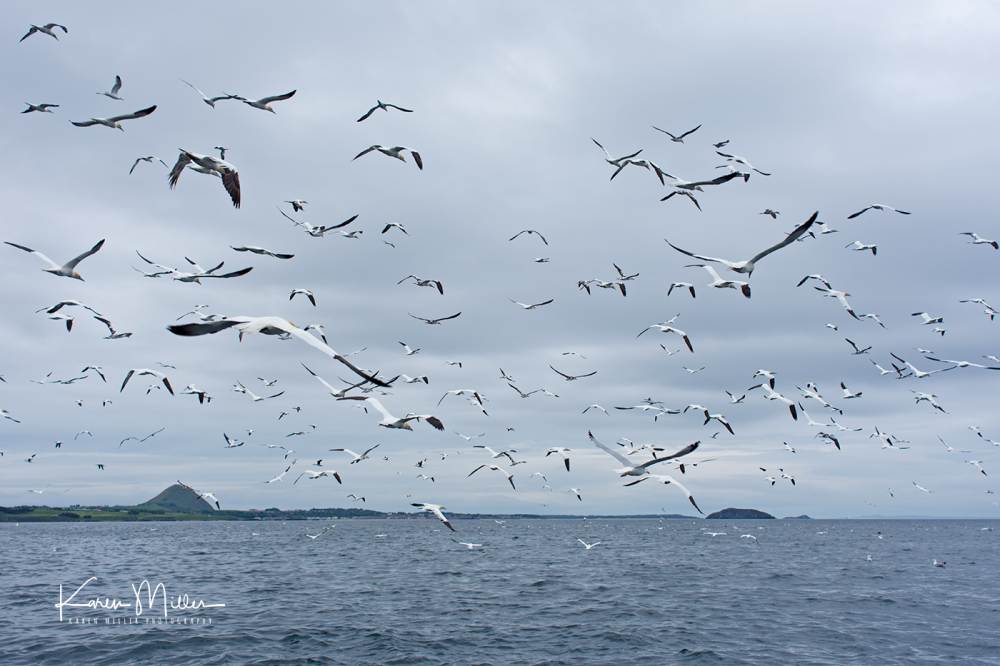
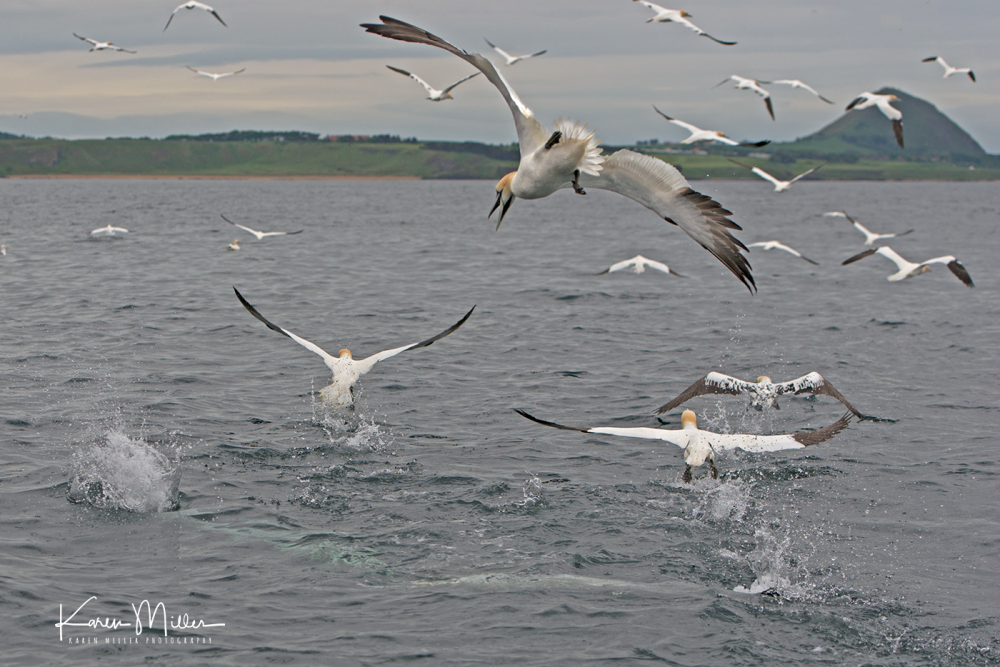
It was incredible, and worth putting the camera down for a minute or two just to revel in the experience. Photographing gannets diving is challenging though! Even if lucky enough to press the shutter as the bird enters the water it’s difficult to achieve a good shot. I was quite interested in the birds just under the surface. I used a couple of different lenses, a wide angle 24mm on my crop-frame Nikon D7200 as well as my 70-200 f2.8 VRII on the full-frame Nikon D610.


Once the fish ran out we headed to the Rock, and amazingly were able to land without too many problems. I had expected the island to smell, but was pleasantly surprised on that front, the gannets were incredible noisy though. We were told to just drink it all in initially whilst Maggie went up to the area she’s managed to reserve for island visitors and I took this time to observe the birds and marvel at how many of them there were!


It was also interesting to note that although so very graceful in the air, the birds were quite ungainly on land, and when landing – I saw quite a few crash into walls, cliffs & other birds! Many were sitting on nests (anywhere there was space including on top of the old ruins) whilst others gathered nesting material or hopped around pestering the other birds.


The chopping boards were definitely a good idea, walking up the path the birds protected their nesting sites by stabbing with their beaks, but so long as I just kept walking and positioned the protection correctly it was fine!
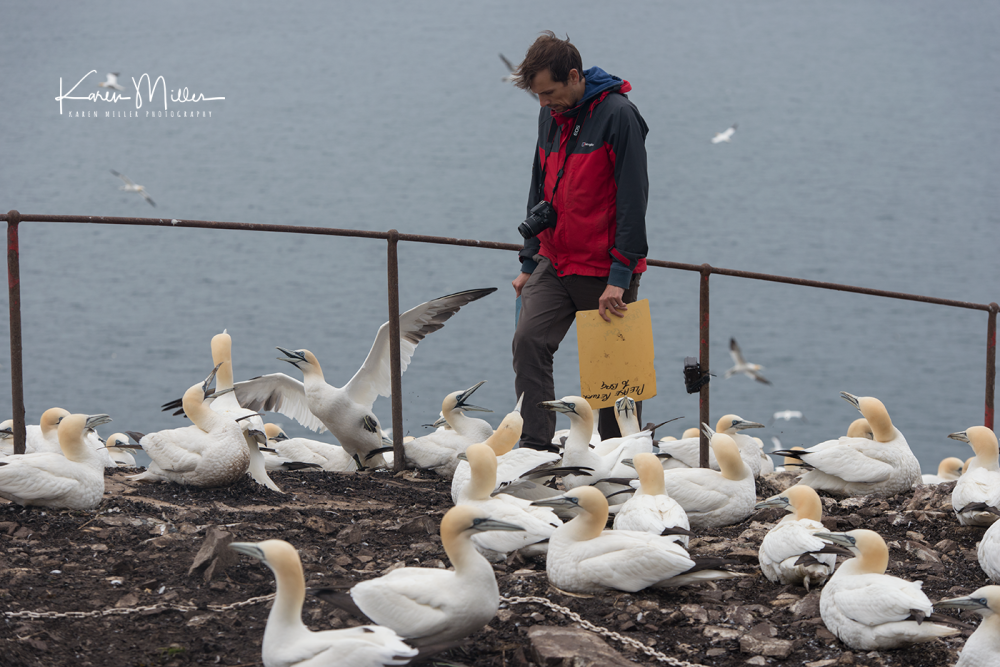
Once we reached our area we had plenty of space and could also go back down towards the landing area, but I chose to stay put for the first hour watching and trying to capture on camera the behaviours of the birds.
What amused me the most was after two birds had a squabble they would often turn back to their partner and have a reassuring cuddle. One bird wandered around for ages with a bill full of seaweed, apparently not knowing what to do with it – whether it had forgotten where to take it, or was just a young bird practising for parenthood, I don’t know, however it looked very pleased with itself!
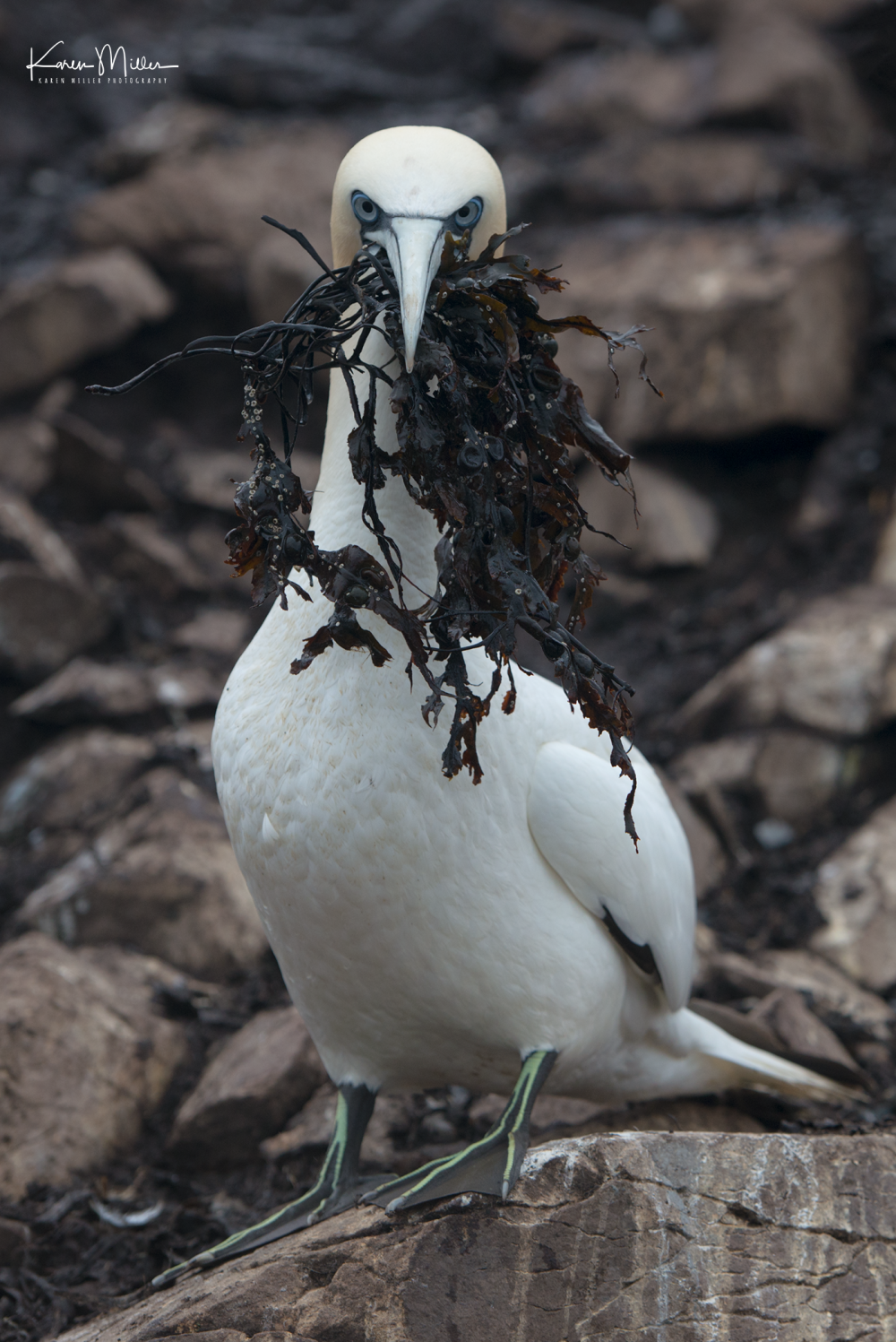
Experienced birds didn’t leave their nests unattended, but the first-timers sometimes made that mistake with disastrous consequences.
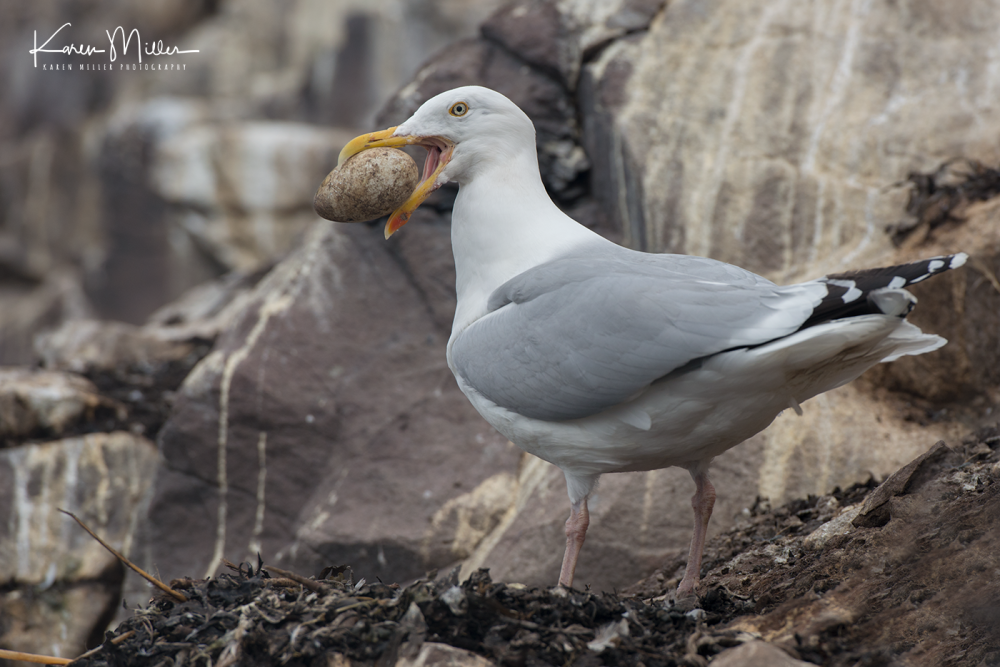
I also spent a fair amount of time photographing the flying birds as they swooped over my head. My favourite shots were when they prepared for landing with their feet sticking out. Fortunately it was a slightly overcast day which assisted greatly in photographing white birds. It was bright enough that I could push the shutter speed up but was able to avoid blowing the highlights.


One of the hardest things to do was isolate birds as there were so many. It made clean images quite difficult. A shallow depth of field helped with static gannets, but was less successful if photographing disagreements.



Our three hours on the Bass Rock passed so quickly. Apparently the best time to land is July when the young are visible and active, but there was still plenty to observe and it was wonderful to learn more about these beautiful birds. It’s definitely a trip I’d recommend whether you’re photographer or bird lover. When it comes to lens choices I’d suggest a short wide angle and a mid-range telephoto – I had up to 200mm and that was more than enough. I would love to visit with a fish eye lens although I’d have to buy one first!
More photographs of my trip can be found on flickr
If you’re interested in purchasing any of my photographs then please visit www.karenmillerphotography.co.uk or contact me directly karen@karenmillerphotography.co.uk


Great blog Karen…fabulous photos G 🙂
LikeLike